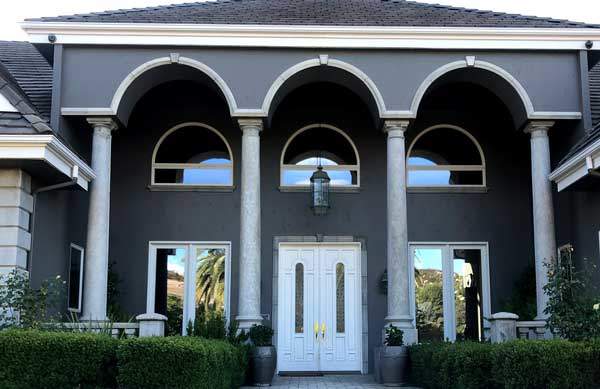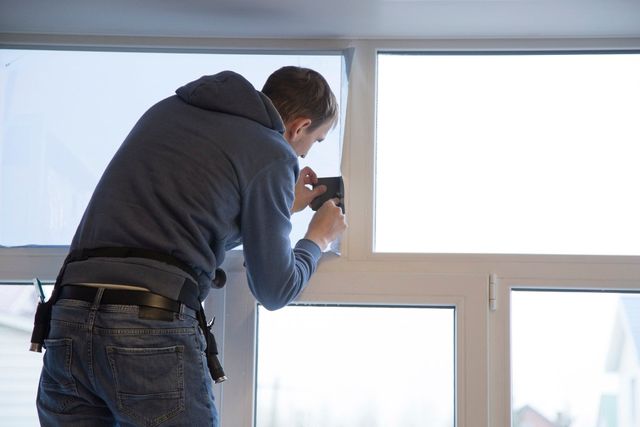Residential Window Tint: Keep Your Home Cool in the Summer Warm
Residential Window Tint: Keep Your Home Cool in the Summer Warm
Blog Article
Just How Residential Window Tinting Boosts Your Home's Energy Performance
Residential window tinting offers an engaging service for house owners seeking to boost power efficiency within their home. By applying specialized movies to windows, it effectively reduces heat transfer, thus stabilizing interior temperatures and minimizing the demand for extreme home heating or air conditioning. This not only curtails power consumption yet also supplies a more comfortable setting by reducing glow. Understanding the subtleties of how tinting works and selecting the proper kind for your home can be critical. Oddly, what elements should one take into consideration prior to making this financial investment?
Understanding Window Tinting
Understanding window tinting is essential for property owners seeking to enhance both comfort and energy efficiency in their living spaces. Residential Window Tint. Window tinting entails the application of a slim movie to the inside or outside surface of glass windows. This film can substantially regulate the amount of sunlight and heat that enters a home, thus influencing indoor climate conditions
There are numerous sorts of window tinting films available, each with distinct buildings. For example, dyed films take in solar power, while reflective films deflect it far from the glass surface area. Ceramic films offer a balance of visibility and warmth being rejected, making them a preferred selection amongst property owners. The performance of window tinting is typically measured by its Visible Light Transmission (VLT) percentage, which indicates how much light can travel through the film.
Benefits of Energy Effectiveness
Window tinting not just boosts visual appeals yet additionally plays a substantial duty in boosting energy effectiveness within domestic areas. By lowering heat transfer with windows, tinted films create a much more steady indoor environment, which can lead to substantial reductions in power intake for cooling and heating. This power efficiency translates into reduced energy costs, supplying home owners with substantial long-term savings.

Additionally, window tinting improves the comfort of living spaces. By minimizing glow and blocking harmful UV rays, tinted windows create an even more enjoyable environment, which can bring about boosted wellness for residents. The protection against UV rays also helps preserve furniture and flooring from fading, adding to the durability of home things.
Just How Tinting Works
Tinting movies run through a combination of sophisticated materials and technologies made to manage the amount of solar energy going into a home. Mainly made up of polyester, these films commonly integrate metal or ceramic fragments that absorb and reflect warmth. This double capacity allows them to dramatically minimize the penetration of ultraviolet (UV) rays and infrared radiation while allowing visible light to travel through.
The effectiveness of window tinting is determined by its solar warmth gain coefficient (SHGC), which shows just how much solar energy is sent via the home window. Reduced SHGC values are more effective as they denote greater warmth rejection. In addition, home window colors can include a range of tones, allowing house owners to tailor their visual preferences while enhancing energy effectiveness.
In addition, these movies work as an obstacle, stopping heat loss throughout colder months by reflecting interior heat back into the home. This thermal insulation impact complements the cooling advantages acquired during warmer months, adding to a balanced indoor climate year-round. By managing solar power properly, household window tinting not only enhances read this convenience but additionally plays a crucial function in decreasing power consumption and reducing utility expenses.
Choosing the Right Tint

There are various kinds of home window films offered, including dyed, metalized, and ceramic. Colored movies are cost-effective however may have limited resilience. Metalized movies supply far better warmth rejection yet can disrupt digital signals. Ceramic movies give outstanding heat control without jeopardizing exposure and are highly durable, making them a prominent choice.
Noticeable light transmission (VLT) is another critical variable, as it shows the amount of all-natural light that can travel through the colored glass. Homeowners ought to choose a tint with a VLT that matches their illumination preferences while still offering ample glare reduction.
Additionally, evaluating the solar warmth gain coefficient (SHGC) can aid determine exactly how well a color can block heat from sunshine. A lower SHGC shows far better warm control, inevitably boosting energy effectiveness.
Setup and Maintenance Tips
Correct installment and upkeep are essential components in taking full advantage of the benefits of residential window tinting. Specialists also utilize specialized methods and tools, which can improve the durability and effectiveness of the color.
Complying with installment, upkeep is essential to prolong the life of the window film. It is recommended to wait at least 30 days before cleaning up the tinted windows to enable the sticky to treat completely.
Attending to these problems quickly can avoid further damages and preserve energy efficiency. By sticking to these setup and maintenance tips, homeowners can guarantee their window tinting proceeds to supply considerable power cost savings and comfort for years to come.
Verdict
To conclude, domestic home window tinting functions as an effective solution for boosting energy efficiency within homes. By lowering warm transfer and blocking harmful UV rays, home window films add to reduce power consumption and boosted interior convenience. The option of ideal tinting materials, in addition to appropriate installment and maintenance, Our site better maximizes these advantages. Inevitably, home window tinting stands for a sustainable financial investment that not only reduces energy bills however additionally promotes a comfy living setting throughout the year.
Home window tinting involves the application of a thin movie to the inside or outside surface area of glass windows. By decreasing warm transfer via home windows, tinted films produce a much more steady interior environment, which can lead to substantial reductions in energy consumption for heating and cooling.The efficiency of home window tinting is gauged by its solar warmth gain coefficient (SHGC), which useful reference shows how much solar energy is transmitted through the window. By handling solar energy efficiently, property home window tinting not just improves convenience however likewise plays a crucial duty in lowering power usage and reducing energy expenses.
By minimizing warm transfer and blocking damaging UV rays, window films contribute to decrease power intake and enhanced indoor comfort.
Report this page